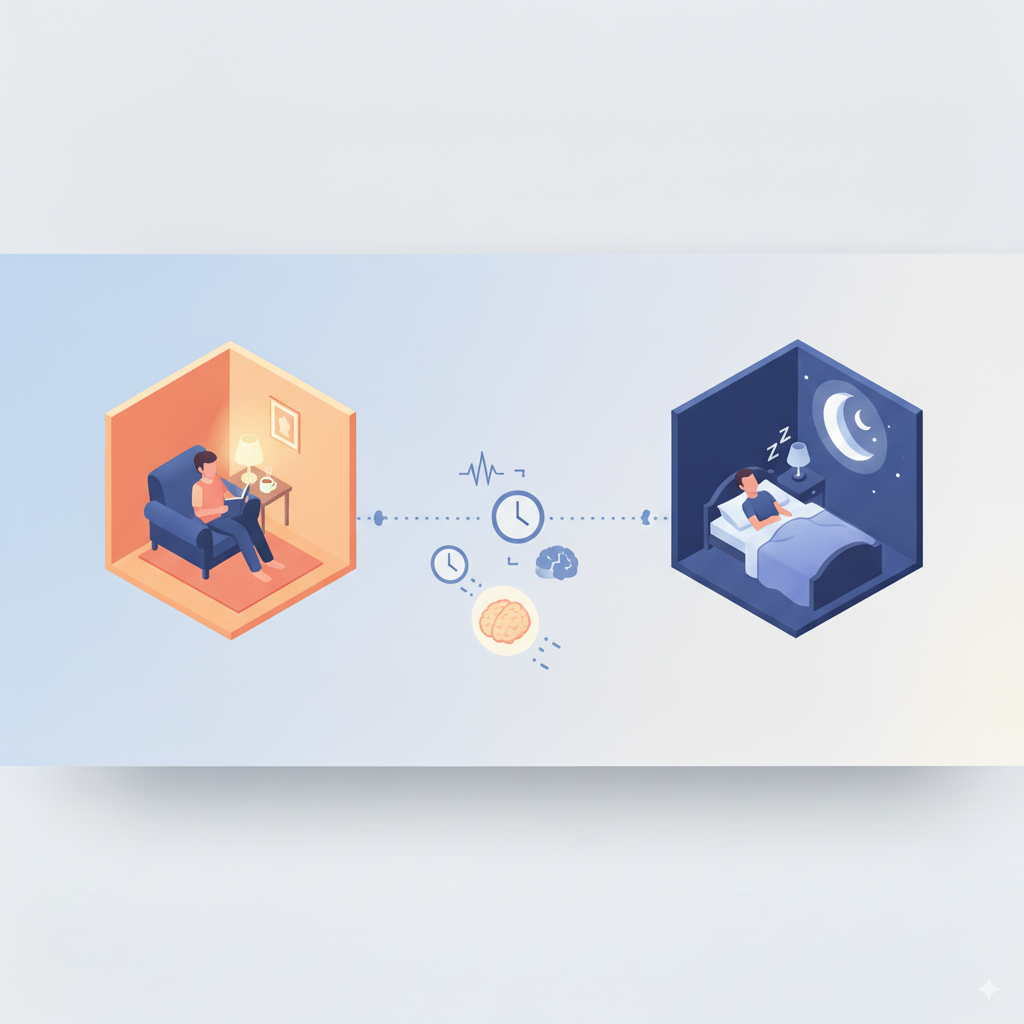Wind Down Routine
A wind down routine is a set of rituals that I perform every night to calm my mind and body and signal to it through conditioned response that it's time to go to sleep. This has helped reduce, but not eliminated, my insomnia. While I try to stay true to this practice nightly, the reality is that life gets in the way. Sometimes, I have to work late. Sometimes, my wife has to work late and disrupts my practice. And I do recognize the selection bias that the practice occurs most consistently when I'm not over-extended and therefore less stressed and therefore can sleep better since my sympathetic nervous system is less activated.
Everyone's routine is different, but the intent should be the same: calm down [the sympathetic nervous system] and activate sleep mode [the parasympathetic nervous system].
The Science Behind Winding Down
To understand why a wind down routine works, you need to understand what's happening in your body as you prepare for sleep. Your autonomic nervous system—which controls unconscious processes like heart rate and breathing—undergoes significant changes as you transition from wakefulness to sleep. During this transition, parasympathetic activity (your "rest and digest" system) increases while sympathetic activity (your "fight or flight" system) decreases¹.
The problem many people with insomnia face is chronic sympathetic hyperactivation and/or parasympathetic hypoactivation that disrupts normal sleep onset². Your wind down routine essentially helps shift this balance in favor of the parasympathetic system—the branch responsible for relaxation and recovery³.
My Routine
At 7pm, my phone goes into bedtime mode. This stops pushing notifications to my phone and makes the screen black & white. While I'm pretty good at being off my phone altogether at night, making the screen black and white prevents it from emitting blue light that would stimulate my brain into thinking that it's still early and making me aroused.
Blue light suppresses melatonin for about twice as long as green light and shifts circadian rhythms by twice as much (3 hours vs. 1.5 hours)⁴. Blue light emitted by electronic devices suppresses the secretion of the hormone melatonin, which regulates the circadian rhythm and consequently influences sleep⁵. Even more concerning, a mere eight lux—a level of brightness exceeded by most table lamps and about twice that of a night light—has an effect on melatonin suppression⁶.
At 8pm, I no longer interact with any electronics. That means no longer checking my phone, watching tv, or going on my laptop. I'll also dim the house lights to a low level. Instead, I typically open up a book of NY Times crosswords and do one. It takes me about 30 minutes to complete, at which point I head upstairs to go to bed. I also accompany this routine with a glass of Thirdzy, my preferred sleep supplement stack—you can find more details about this and other bedtime supplements in my "Bedtime Supplements" article.
My phone doesn't follow me into the bedroom. It remains charging on my desk in a separate room so that there is no temptation to turn it on or ability to see the time. There are also no clocks that are visible at night in my bedroom and I have to go on good faith that the alarm will sound to tell me to get out of bed in the morning.
The Power and Pitfalls of Routine
I find that my body and mind respond well to routine. Doing things at the same time and in the same way every day helps me engage in them more quickly and signals to my nervous system that it's time to shift gears. But over-reliance on routine can be dangerous too. If I'm too dependent on doing something in a certain way, when I'm forced to break from it, it can cause challenges. In those times, I try to respect the underlying principles (e.g., focus on calming down and diminishing stimulus) rather than the specific practices that I do to achieve them.
My Protocol Summary
7pm: Screen goes to black and white mode
8pm: No more electronics and dimming of lights
8-8:30pm: Crossword puzzle and Thirdzy
Phone policy: Device sleeps downstairs, away from bedroom
The key isn't the specific timing or activities—it's creating consistent signals that help your nervous system transition from the arousal of the day to the rest that your body needs for recovery.
References
Silvani A, Dampney RAL. Central control of cardiovascular function during sleep. Am J Physiol Heart Circ Physiol. 2013;305(12):H1683-92. PMID: 24097429
Ma MA, Morrison EH. Neuroanatomy, Nucleus Suprachiasmatic. In: StatPearls [Internet]. Treasure Island (FL): StatPearls Publishing; 2018. PMID: 30252235
Tobaldini E, Costantino G, Solbiati M, et al. Sleep, sleep deprivation, autonomic nervous system and cardiovascular diseases. Neurosci Biobehav Rev. 2017;74(Pt B):321-329. PMID: 27397854
Zeitzer JM, Dijk DJ, Kronauer R, Brown E, Czeisler C. Sensitivity of the human circadian pacemaker to nocturnal light: melatonin phase resetting and suppression. J Physiol. 2000;526(Pt 3):695-702. PMID: 10922269
Chang AM, Aeschbach D, Duffy JF, Czeisler CA. Evening use of light-emitting eReaders negatively affects sleep, circadian timing, and next-morning alertness. Proc Natl Acad Sci U S A. 2015;112(4):1232-7. PMID: 25535358
Gooley JJ, Chamberlain K, Smith KA, et al. Exposure to room light before bedtime suppresses melatonin onset and shortens melatonin duration in humans. J Clin Endocrinol Metab. 2011;96(3):E463-72. PMID: 21193540

